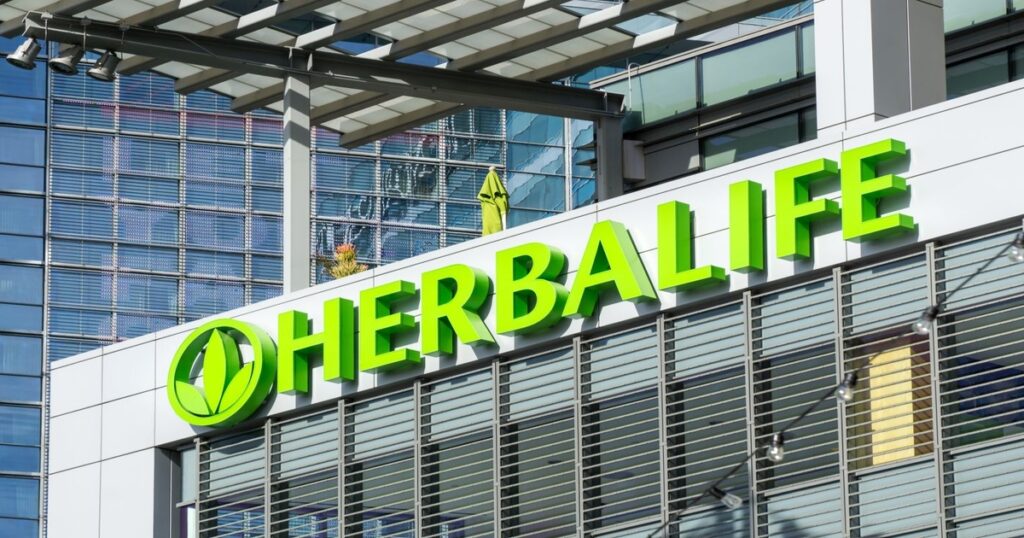Herbalife executives touted the company’s second quarter 2024 earnings report, even though sales were flat when considered on a constant currency basis. That reversed a trend of several quarters, however, during which the company’s net sales steadily fell.
The multi-level marketing giant, the world’s largest MLM devoted solely to the sale of nutritional products, reported its earnings this week and conducted a call with stock analysts yesterday.
Declining sales hit plateau
In the earnings call, company executives noted that net sales actually rose by 0.2% on a constant currency basis when compared to the second quarter of 2023. This was presented as good news, as the company’s sales have fallen steadily for several years.
For the quarter, the company recorded $1.28 billion in net sales, compared to $1.31 billion in the same period a year previously. The company posted a thin 5 cents per share in earnings on those sales.
Sales were flat or rose slightly in all the company’s markets except for North America, where they fell by 6.7%. For the first half of 2024, sales in North America fell by 8.6%.
However, the company was forced to revise its outlook downward for its full 2024 fiscal year to a drop of 3.5% in net sales year over year at the low end to a high of 1.5% growth. Prior to this earnings statement, the company was projecting flat sales on the low end to 5% growth on the upper end.
Recruiting new distributors
In 2016, Herbalife agreed to an unprecedented (in terms of size) $200 million fine levied by the U.S. Federal Trade Commission. As part of the settlement Herbalife agreed to certain changes in its compensation model to place increased emphasis on sales of products to consumers and lessen the financial rewards for the recruitment of new distributors to put to rest allegations that the company was operating an illegal pyramid scheme.
Now it appears Herbalife may need to find a way to reemphasize recruitment. The company cited falling recruitment of distributors over previous quarters as a big part of the declining sales trend.
More than a decade ago, Herbalife started rolling out a “Nutrition Club” model of distribution that had been pioneered by a successful distributor in Mexico. In this model, individual distributors would rent retail locations, some in Class C commercial space, some in higher end strip malls and other sites.
The clubs would look and act like standalone Herbalife retail stores but would be owned and operated by the individual distributors.
Double-edged sword of Nutrition Clubs
Trouble was, customers apparently started seeing them as purely retail locations, rather than as places to also get information about the Herbalife business opportunity. And few of those customers were signing up to become preferred customers, meaning few were committing to make additional purchases to obtain discounts. It’s from the pool of preferred customers that most of the future independent distributors are recruited.
This puts the company at something of a disadvantage if consumers are buying the products purely as a retail purchase without reference to the business opportunity because its products tend to be on the pricier end of the scale.
The company mentioned in its earnings release that it was forced in the second quarter to cut prices in Central and South America in order to broaden its markets. The company’s wares were priced high enough that “our products seem to only be able to skim this top surface of consumers,” said Chief Financial Officer John DeSimone.
Stephen Gratziani, Herbalife’s recently named president and himself a highly successful distributor, said that in 2023 the Nutrition Clubs attracted more than 4.4 million customers, did more than 55 million transactions, and generated more than $915 million in business. Even with that, they were proving to be a double-edged sword.
“There’s a huge opportunity for us because most of these transactions and most of the customers, they’re really coming in to buy a healthy shake and energy tea and a very small percentage of them are actually coming through and becoming, for example, preferred customers. The conversion is 1% to 2% on average for the club and even less in terms of distributors,” Graztiani said.
To help distributors in North America (and other markets) more effectively recruit new distributors, Herbalife has contracted with well-known multi-level marketing sales trainer Eric Worre to create a course tailored specifically to its business model.
Stock traders cool on stock
To generate additional cash, Herbalife also announced the completion of a sale and lease back arrangement for its large manufacturing and R&D facility in Torrance, Calif. Simone said that’s part of the company’s plan to pay down $1 billion in debt over the next five years.
The stock market’s reaction to Herbalife’s take on its results was tepid. The company’s shares were trading at $12.25 a share the morning after the announcement but fell to $10.90 later in the afternoon on Thursday before rebounding slightly. For the year, the company’s share price is off almost 30%, and has fallen more than 70% over a five-year span.

